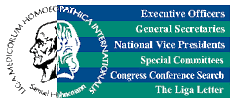

Acupuncture & Its treatment
Acupuncture Provides Pain Relief for Many Patients
Acupuncture is an ancient practice in which very fine needles are inserted into the skin at strategic points on the body to relieve pain and treat disease. The Chinese developed acupuncture centuries ago in accordance with the theory that energy flows through channels between the surface of the body and internal organs.
Chinese medicine maintains that the more than 2,000 acupuncture points on the human body connect with 12 main and eight secondary “meridians” or channels. Pain and disease are the result of these channels becoming blocked. By placing needles at one end of the channel or the other, healthy energy can be restored.
Western medicine’s view is that the placement of acupuncture needles at specific pain points releases endorphins and opioids, the body’s natural painkillers, and perhaps immune system cells as well as neurotransmitters and neurohormones in the brain. Research has shown that glucose and other bloodstream chemicals become elevated after acupuncture.
According to the National Institutes of Health’s National Center for Complementary and Alternative Medicine, there is also evidence that stimulating acupuncture points enables electromagnetic signals to be relayed at a greater rate than under normal conditions. This may increase the flow of healing or pain-killing natural chemicals to injured areas.
When pain is relieved, patients feel a greater sense of well-being overall, physically and emotionally. As a result, they may heal faster. Most acupuncture points coincide with the “trigger points” described by Janet G. Travell, MD, whose textbook, Myofascial Pain & Dysfunction: The Trigger Point Manual, is widely used at pain management centers in the Western world.
How is it done?
Acupuncture needles are metallic and sterile, used once and discarded. Needles are solid (not hollow, as are hypodermic or vaccination needles) and are slightly bigger than the width of human hair. Patients can feel the needle pierce the skin, but there is no pain. The puncture site is usually swabbed with a disinfectant beforehand. When the needle locates the trigger point, there may be a “grabbing” sensation, followed by a relaxed, heavy feeling and overall body warmth. Some patients even fall asleep during treatment. Side effects of acupuncture are rare, but there may be some soreness or light headedness following treatment.
There are several acupuncture methods beyond simply inserting needles. Sometimes a low electrical charge is sent through the needles and sometimes the needles are heated with a heat lamp or “moxa stick,” which is an herbal heat source that looks and burns like a cigar. Sometimes two needles are used at one trigger point. Sometimes the needles are twirled or manipulated by hand, and sometimes needles aren’t used at all, but trigger points are massaged instead.
Acupuncture at the Jane B. Pettit Comprehensive Pain Management Center
At the pain management center at Children’s Hospital of Wisconsin, a major affiliate of the Medical College of Wisconsin, the first acupuncture treatment typically consists of inserting needles in the body and points on the ear that correspond with body trigger points. Trigger points are determined by the location of pain. For example, trigger points for treating headaches include locations on the thumb, knee and wrist. Knee pain may be treated with needles inserted into the toe, face and arm.
The pain management center has used acupuncture with success in treating conditions such as fibromyalgia (a chronic pain condition affecting muscles and connective tissues), chronic headaches, neck pain from whiplash, knee and hip pain from arthritis, chronic abdominal pain, asthma, pain caused by sickle-cell anemia and even shingles (a painful rash caused by a virus).
According to a National Institutes of Health panel, convened in November of 1997, clinical studies have shown that acupuncture is helpful in treating nausea caused by surgical anesthesia and cancer chemotherapy, dental pain after surgery, addiction, headaches, menstrual cramps, tennis elbow, fibromyalgia, myofascial (connective tissue) pain, osteoarthritis, lower back pain, carpal tunnel syndrome, asthma, and to assist in stroke rehabilitation. The World Health Organization lists more than 40 conditions for which acupuncture may be used.
More and more, acupuncture is being used to supplement other forms of treatment, which is one reason patients often turn to a physician who has training in both Western medicine and acupuncture. Organizations such as the American Academy of Medical Acupuncture, National Acupuncture and Oriental Medicine Alliance. and American Association of Oriental Medicine provide lists of credentialed acupuncture practitioners.
At the pain management center, insurance pays for acupuncture treatments for about 70% of patients. Otherwise, a standard acupuncture session by a physician trained in acupuncture costs $50-70. More than one treatment is typically required for results, although some patients feel better after one session.
To find acupuncture Centre at Bangi or Kuala Lumpur, Damnsara Utama, Brunei or Indonesia kindly call 019-9401915
Web
http://acumalay.blogspot.com















1 comment:
Great article explaining how acupuncture can be an effective alternative treatment for managing pain. I like how you highlighted a more holistic approach instead of just masking symptoms. Many people looking for long-term relief often search for options like the Best Pain Clinic in Plano, and treatments such as acupuncture can definitely play an important role in comprehensive pain care. Thanks for sharing such informative content.
Post a Comment